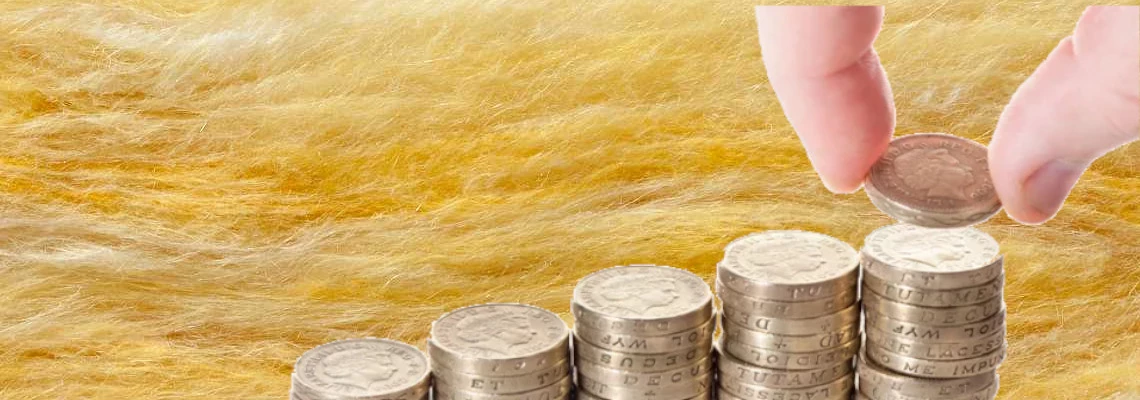
THE BEST AND CHEAPEST INSULATION OPTIONS FOR YOUR HOME*
As homeowners, we all want to keep our homes comfortable and energy-efficient. One of the best ways to achieve this is by insulating our homes. Insulation helps regulate the temperature inside our homes and reduces our energy bills. But with so many insulation options available, it can be challenging to choose the right one for your home. In this blog, we'll discuss the cheapest and most effective insulation options, as well as the best eco-friendly options available.
 Table of contents
Table of contents
THE BEST AND CHEAPEST INSULATION OPTIONS FOR YOUR HOME
WHAT IS THE CHEAPEST AND MOST EFFECTIVE INSULATION?
WHAT ARE 3 GOOD INSULATING MATERIALS?
WHAT IS THE MOST EFFECTIVE THERMAL INSULATOR?
WHAT IS THE BEST AND COMMONLY USED INSULATION MATERIAL IN UK?
ECO-FRIENDLY INSULATION MATERIALS
BEST INSULATION TO KEEP HEAT OUT
WHAT IS THE CHEAPEST INSULATION TO BUY?
BEST INSULATION FOR THE MONEY
CHEAPEST INSULATION FOR 2X4 WALLS
BEST THERMAL INSULATION FOR WALLS
CONCLUSION
WHAT IS THE CHEAPEST AND MOST EFFECTIVE INSULATION?
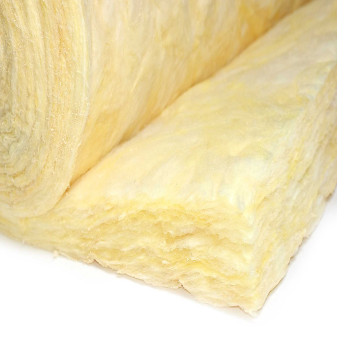 Fibreglass insulation is considered the cheapest and most effective UK insulation option. It's made of glass fibres and is available in batts, rolls, or loose-fill form. Fibreglass insulation is widely used in residential and commercial buildings due to its affordability and effectiveness in reducing heat transfer.
Fibreglass insulation is considered the cheapest and most effective UK insulation option. It's made of glass fibres and is available in batts, rolls, or loose-fill form. Fibreglass insulation is widely used in residential and commercial buildings due to its affordability and effectiveness in reducing heat transfer.
Fibreglass has relatively good properties for its price, but it can lose its effectiveness if it gets wet. Unlike other insulation materials, fibreglass does not dry out once it gets wet. Moisture can reduce its R-value and compress the insulation, which makes it less effective in reducing heat transfer. Therefore, fibreglass insulation is not recommended for areas that are prone to moisture or water leaks. However, if installed properly and in dry areas, fibreglass insulation can provide a cost-effective and efficient insulation solution.
In addition to being effective, fibreglass insulation is also easy to install, making it a popular option for DIY projects. It can be installed without professional help, which can save you money on installation costs. Fibreglass insulation is also non-flammable, which makes it a safer option for your home.
Read more: Best loft roll insulation
Read more: How to cut fibreglass insulation
Fibreglass insulation is one of the most affordable insulation materials available on the market, with the only real competition in terms of cost being expanded polystyrene (EPS) insulation, commonly known as Styrofoam. However, while Styrofoam may be in some cases a cheaper alternative to fibreglass insulation, it cannot be used as widely or effectively in all applications.
Styrofoam insulation is commonly used in foundations, it is not suitable for use in internal walls as it can be attractive to rodents and other pests. These pests can easily gnaw through the material, causing damage to the insulation and potentially creating access points to your home or building.
This is a major concern in areas where rodent infestations are common, as it can lead to costly repairs and even health hazards. To find out how to cut polystyrene click here
As a result, many homeowners and builders opt for alternative insulation materials, such as fibreglass or rockwool, which are less attractive to rodents and other pests.
Read more: Will mineral wool keep mice away?
In addition to its versatility, fibreglass insulation also has a higher R-value per inch than Styrofoam, meaning it can provide better insulation with less thickness. As a result, fibreglass insulation is often the preferred choice for insulation in many applications.
However, one of the drawbacks of fibreglass insulation is that it can cause skin irritation and respiratory problems when inhaled. It's essential to wear protective clothing and a mask when installing fibreglass insulation to prevent any health risks.
Overall, fibreglass insulation is the cheapest and most effective insulation option available, making it a popular choice for homeowners and builders alike.
 For comparison purposes, here are the approximate costs of 100mm thick insulation per square metre for some common materials:
For comparison purposes, here are the approximate costs of 100mm thick insulation per square metre for some common materials:
- Fibreglass insulation: £7 - £10 per square metre
- Rockwool insulation: £13 - £15 per square metre
- Polystyrene insulation (EPS): £13 - £16 per square metre
- Polyisocyanurate (PIR) insulation: £20 - £23 per square metre
Please note that these are approximate costs and can vary depending on the specific product, supplier, and location. Additionally, the cost of installation is not included in these estimates. It's important to consider not only the upfront cost but also the long-term savings on energy bills when choosing insulation.
WHAT ARE 3 GOOD INSULATING MATERIALS?
Apart from fiberglass insulation, three other good insulating materials are polyisocyanurate (PIR) insulation such as Celotex or Xtratherm, Jablite expanded polystyrene (EPS) insulation and Rockwool insulation such as RWA 45, RW3 or RW5.
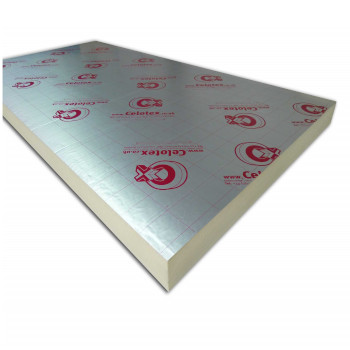 Number 1
Number 1
PIR insulation is a high-performance insulation material that has a high R-value per inch of thickness, making it an efficient insulation material for walls, roofs and floors.
In fact, Polyisocyanurate (PIR) insulation is one of the most commonly used types of insulation in the UK, due to its high thermal efficiency and versatility.
There are several well-known brands of PIR insulation in the UK, including Celotex, Xtratherm and Kingspan.
These brands offer a range of PIR insulation products with different thicknesses and dimensions to suit different applications.
PIR insulation is relatively easy to install and can be easily cut to size using a saw. It is also lightweight, which makes it easier to handle and transport on site.
Additionally, PIR insulation has good fire resistance properties, making it a safe choice for use in buildings.
If you are interested in learning more about how to cut PIR insulation, we have another blog post titled "How to Cut PIR Insulation" that provides detailed instructions and tips for cutting PIR insulation to the right size and shape for your specific application.
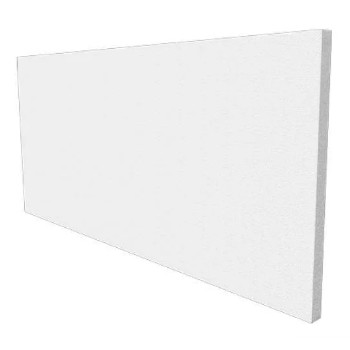 Number 2
Number 2
Expanded polystyrene (EPS) insulation is the second most popular insulation material after PIR and is known for its good thermal insulation properties, lightweight structure and ease of installation. EPS insulation is also commonly used as a type of subsoil protection board during the construction of building foundations. This is because EPS insulation has good compressive strength and can help to protect against ground heave caused by soil expansion.
Some popular EPS subsoil protection boards used in the UK include Heaveguard, Claymaster and Claylite, which are designed to provide protection against different soil types and levels of ground movement. These EPS boards can be installed beneath concrete slabs or ground-bearing floors to provide added protection against ground movement and moisture ingress.
One of the most popular brands of EPS insulation in the UK is Jablite, which offers a range of thicknesses. EPS insulation can be easily cut to size and shape for specific applications. It is also resistant to moisture, making it a good choice for use in damp environments. If you want to learn how to easily cut EPS insulation, click here.
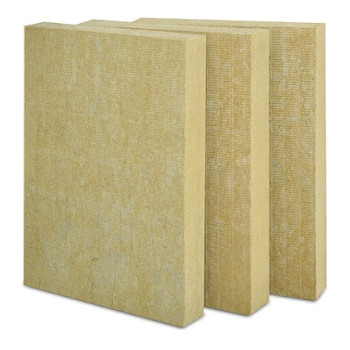 Number 3
Number 3
Rockwool insulation is the third most commonly used insulation product in the UK, thanks to its excellent acoustic properties. It is commonly used to reduce noise transmission between floors and walls, making it a popular choice for soundproofing projects.
Rockwool insulation is made from stone wool, which is created by melting natural basalt rock and then spinning it into fibres. The resulting insulation is highly effective at reducing sound transmission, as well as providing excellent thermal insulation properties.
Some popular brands of Rockwool insulation in the UK include the Rockwool RW range and the Knauf RS range. These products are available in a variety of sizes and thicknesses to suit a range of insulation needs, and are easy to install using standard tools and techniques.
Both Rockwool and Knauf offer stone wool insulation with an aluminium foil facing on one or both sides. The foil facing not only makes installation easier but also provides additional protection against fire and acts as a radiant barrier to reflect heat or cold.
Products:
The aluminium foil facing is particularly useful in areas where temperature control is a concern, such as attics or walls facing direct sunlight. By reflecting the heat or cold back into the space, it can help maintain a more comfortable indoor temperature and reduce energy costs.
It's important to note that the aluminium foil facing should always be installed facing the correct direction to achieve the desired insulation benefits. In fact, we have another blog that provides all the necessary information on how to install it correctly.
WHAT IS THE MOST EFFECTIVE THERMAL INSULATOR?
When it comes to thermal insulation, there are several materials that are considered to be highly effective. However, the most effective thermal insulator is aerogel. Aerogel is a synthetic material that is derived from a gel, but with its liquid component replaced with a gas. This results in an incredibly low-density material that is highly porous, making it an excellent insulator.
Aerogel has an extremely low thermal conductivity, which means that it can effectively prevent the transfer of heat from one side of the material to the other. It also has a high melting point and is fire-resistant, which makes it an ideal choice for a variety of applications.
Despite its impressive thermal insulation properties, aerogel is not widely used in construction due to its high cost. Other highly effective thermal insulators that are more commonly used include polyurethane foam, polystyrene foam, and fibreglass insulation. Each of these materials has its own unique set of benefits and drawbacks, and the best choice will depend on the specific needs and requirements of the project.
WHAT IS THE BEST AND COMMONLY USED INSULATION MATERIAL IN UK?
When it comes to the best insulation material, it can depend on a variety of factors, such as the climate, the application and the budget. However, in the UK, PIR (polyisocyanurate) insulation is one of the most commonly used products for insulation. No wonder why companies like Celotex and Xtratherm are achieving increasing sales profits from selling PIR insulation products.
PIR insulation has a high thermal performance, meaning it effectively reduces heat transfer and helps to keep buildings warm in the winter and cool in the summer.
It is made from polyisocyanurate foam, which has a high R-value, meaning it can provide effective insulation in thinner layers compared to other materials like fibreglass.
PIR insulation is also lightweight and easy to handle, making it convenient for transportation and installation. This is especially valuable in tight spaces or dense urban areas like London, where space can be limited and difficult to access. 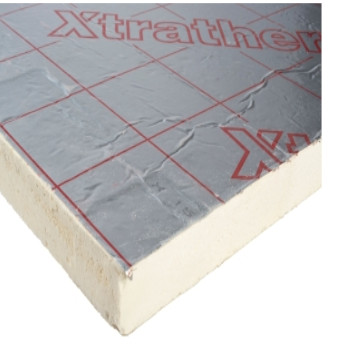 Almost every PIR board has 100 mm intervals and lines that make it easier to measure and cut during installation. It also produces minimal dust and is safe for human handling.
Almost every PIR board has 100 mm intervals and lines that make it easier to measure and cut during installation. It also produces minimal dust and is safe for human handling.
Leading brands of pir insulation in the UK include Celotex and Xtratherm which offer a range of products suitable for different applications and building types.
Celotex is a well-known brand in the UK and offers a wide range of PIR insulation products, including their popular Celotex TB4000 range. This range is designed for use in pitched roofs, flat roofs, and floors, and is available in a variety of thicknesses.
Xtratherm is another leading brand of PIR insulation in the UK, offering a range of insulation products suitable for roofs, walls, and floors. Their Thin-R range is a popular choice for projects where space is limited, as it offers excellent thermal performance in a thinner profile.
Kingspan is also a global leader in insulation solutions, and their range of PIR TP10 insulation products is widely used in the UK. Their Kooltherm range is particularly popular and is available in a range of thicknesses and sizes to suit different applications, including pitched roofs, flat roofs, and walls.
Other manufacturers of PIR insulation in the UK include EcoTherm, IKO Enertherm and Recticel. These manufacturers offer a range of PIR insulation products suitable for different applications and building types, allowing architects, builders, and homeowners to choose the best insulation solution for their needs.
ECO-FRIENDLY INSULATION MATERIALS
Eco-friendly insulation materials are becoming increasingly popular due to their sustainable nature and ability to reduce energy consumption. Here are some examples of eco-friendly insulation materials:
Cellulose insulation
This type of insulation is made from recycled paper and treated with fire-retardant chemicals. It is an effective insulator, and because it is made from recycled materials, it is considered eco-friendly.
Sheep wool insulation
Sheep's wool insulation is a natural and sustainable alternative to synthetic insulation. It is biodegradable, non-toxic, and can be recycled. It is also highly effective at regulating temperature and moisture.
Hemp insulation
Hemp insulation is made from the fibres of the industrial hemp plant. It is renewable, biodegradable, and does not require the use of pesticides or herbicides during cultivation.
Cork insulation
Cork insulation is made from the bark of the cork oak tree. It is highly effective at reducing energy consumption.
Aerogel insulation
Aerogel insulation is a highly effective insulator that is made from a gel-like substance. It is eco-friendly because it is made from silica, a natural and abundant resource.
These eco-friendly insulation materials are a great option for those who are concerned about reducing their environmental impact and want to create a more sustainable home or building.
Read more: Sustainable options for insulating your home
BEST INSULATION TO KEEP HEAT OUT
When it comes to keeping heat out, the best insulation material is one that has a high reflectivity and low thermal conductivity. Reflectivity refers to the ability of a material to reflect heat and radiation, while thermal conductivity refers to the rate at which heat can pass through a material. Here are some of the best insulation materials for keeping heat out:
Radiant barriers
These are highly reflective materials that are designed to reflect heat and radiation away from the surface. They are often installed in attics and walls and can help reduce the amount of heat that enters the building
Product examples:
Polyisocyanurate (PIR) insulation
This is a type of foam insulation that has a high R-value (a measure of thermal resistance) and a low thermal conductivity. PIR insulation is commonly used in walls, roofs, and floors to help keep heat out. Polyisocyanurate (PIR) insulation is known for its ability to reflect heat due to the aluminium foil facing on its surface. This makes it an effective insulation material to keep heat out during the summer months, as it helps to prevent heat from entering the building. In addition to its heat-reflecting properties, PIR insulation is also highly durable and resistant to moisture, making it an ideal choice for use in a variety of different building applications. Whether you are constructing a new building or looking to improve the energy efficiency of an existing structure, PIR insulation is a great choice for keeping heat out and reducing your energy costs.
Product examples:
Rockwool
Stone wool foil-faced Rockwool products also provide good heat resistance by reflecting heat away from the surface of the insulation. The aluminium foil layer on top of the insulation helps to reflect radiant heat and reduce heat transfer through convection. This makes them a good choice for use in hot climates or areas with high heat exposure, as they can help keep the interior of a building cooler and reduce energy costs for air conditioning.
Product examples:
WHAT IS THE CHEAPEST INSULATION TO BUY?
Fibreglass insulation is the cheapest insulation option available. It's highly effective and affordable, making it an excellent choice for homeowners on a budget. They are made of glass fibres and come in pre-cut lengths to fit between studs, joists, and rafters.
BEST INSULATION FOR THE MONEY
When it comes to finding the best insulation for the money, it's important to consider both the upfront cost and the long-term energy savings. While some types of insulation may have a higher initial cost, they can lead to significant energy savings over time, making them a better investment in the long run.
One of the most cost-effective insulation materials is fibreglass insulation, which is widely available and relatively inexpensive. It's also easy to install and can be used in a variety of applications, from attics to walls to floors. It should be remembered that fibreglass insulation can lose all of its thermal insulation properties if it comes into contact with water. This can make its use uneconomical. In such cases, it is necessary to look for other cost-effective insulation options, and one of the best alternatives is polyisocyanurate foam (PIR).
If you're looking for the best insulation for money in the long run, Polyisocyanurate (PIR) insulation is a top choice. Although it may have a higher upfront cost than some other materials, its excellent thermal efficiency and durability make it a cost-effective option over time. PIR insulation has a high R-value (a measure of thermal resistance), which means it can effectively reduce heat transfer and energy loss in buildings, leading to lower heating and cooling costs. Additionally, PIR insulation is known for being easy to install and cut, which can save time and labour costs during installation.
CHEAPEST INSULATION FOR 2X4 WALLS
The 2x4 wall refers to the framing of the wall, which is made up of 2x4 inch wood studs that are spaced 16 inches apart. This type of construction is popular because it is relatively easy and inexpensive to build, and it provides adequate structural support for most residential buildings.
However, because the wall cavity of a 2x4 wall is only 4 inches deep, it can be more challenging to achieve high levels of thermal insulation compared to thicker walls. This is why homeowners and builders are often interested in finding the most cost-effective insulation options for 2x4 walls that can provide good thermal insulation properties while still fitting within the narrow wall cavity.
By understanding the specific challenges posed by 2x4 walls, homeowners and builders can make informed decisions about the best insulation materials and techniques to use for their construction or renovation projects.
One of the cheapest and most commonly used insulation materials for 2x4 walls is fibreglass batts. They are easy to install and provide good thermal insulation properties. However, fibreglass batts may not be the best option for homes located in areas with high moisture levels, as they tend to absorb moisture over time, reducing their thermal insulation effectiveness.
If you are looking for a more cost-effective insulation material that can provide excellent thermal insulation properties and is also resistant to moisture, then foam board insulation such as celotex or Xtratherm may be a better option. While it may be slightly more expensive than fibreglass batts, PIR foam board insulation has a higher R-value (thermal resistance) and can significantly reduce energy bills over time.
BEST THERMAL INSULATION FOR WALLS
When it comes to choosing the best thermal insulation for walls in the UK, there are several options available on the market. However, the most popular and effective insulation materials for walls in the UK include PIR, rockwool (mineral wool), and EPS polystyrene.
PIR insulation is a premium insulation material that provides excellent thermal insulation properties. It has a high R-value and can significantly reduce energy costs. PIR insulation is also lightweight and easy to install, making it a popular choice for both new construction and renovation projects.
Rockwool insulation, also known as mineral wool, is another popular insulation material for walls in the UK. It is made from natural rock, which makes it environmentally friendly, and has excellent thermal insulation properties. It is also fire-resistant and provides good sound insulation, making it a great option for homes located near busy roads or other noisy areas.
EPS polystyrene is another option that provides good thermal insulation properties. It is lightweight and easy to install, and has a relatively low cost compared to other insulation materials. However, EPS polystyrene may not be as effective at reducing noise transmission through walls as other insulation materials.
Another option for thermal insulation in walls is insulated plasterboard. This type of insulation combines plasterboard with a layer of insulation material, providing both thermal and acoustic insulation properties. It is easy to install and can be used to upgrade the thermal performance of existing walls without the need for extensive construction work.
In conclusion, the best thermal insulation for walls in the UK will depend on your specific requirements and budget. However, PIR, Rockwool and EPS polystyrene are all popular options that provide excellent thermal insulation properties. Insulated plasterboard is also a good option for those looking for a cost-effective and easy-to-install solution for improving the thermal performance of their walls.
CONCLUSION
In conclusion, choosing the right insulation material for your home is crucial to keep it comfortable and energy-efficient. Fibreglass insulation is the most affordable and effective option.
Related articles:
How to estimate how much insulation you need
Unfaced insulation. Change before you have to.
Mineral wool insulation. The ugly truth?
*All the information provided in the content published on Insulationgo blog is for informational and educational purposes only. Insulationgo LTD makes every effort to ensure the accuracy and timeliness of the content, but we do not assume any responsibility for any errors or omissions.
The information presented on this blog should not be considered as professional advice or a substitute for consulting relevant experts. Before making any purchase decisions or taking action based on the information presented here, it is strongly recommended to contact the product manufacturer directly to verify the details and ensure its suitability for your specific needs.
By using this blog, you acknowledge and agree that Insulationgo LTD shall not be held liable for any damages, losses, or inconveniences arising from the use or reliance on the information provided herein. This limitation of liability applies to all users of the blog, including but not limited to visitors, readers, and subscribers.










































































































